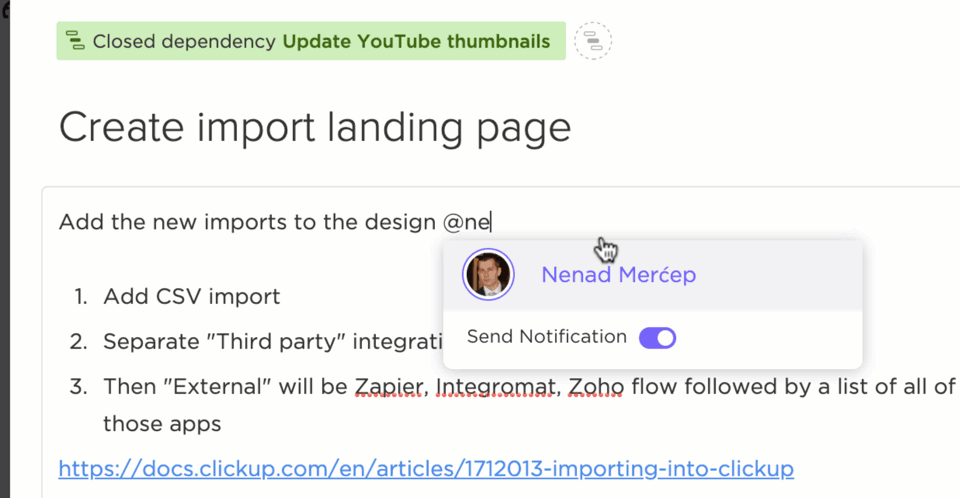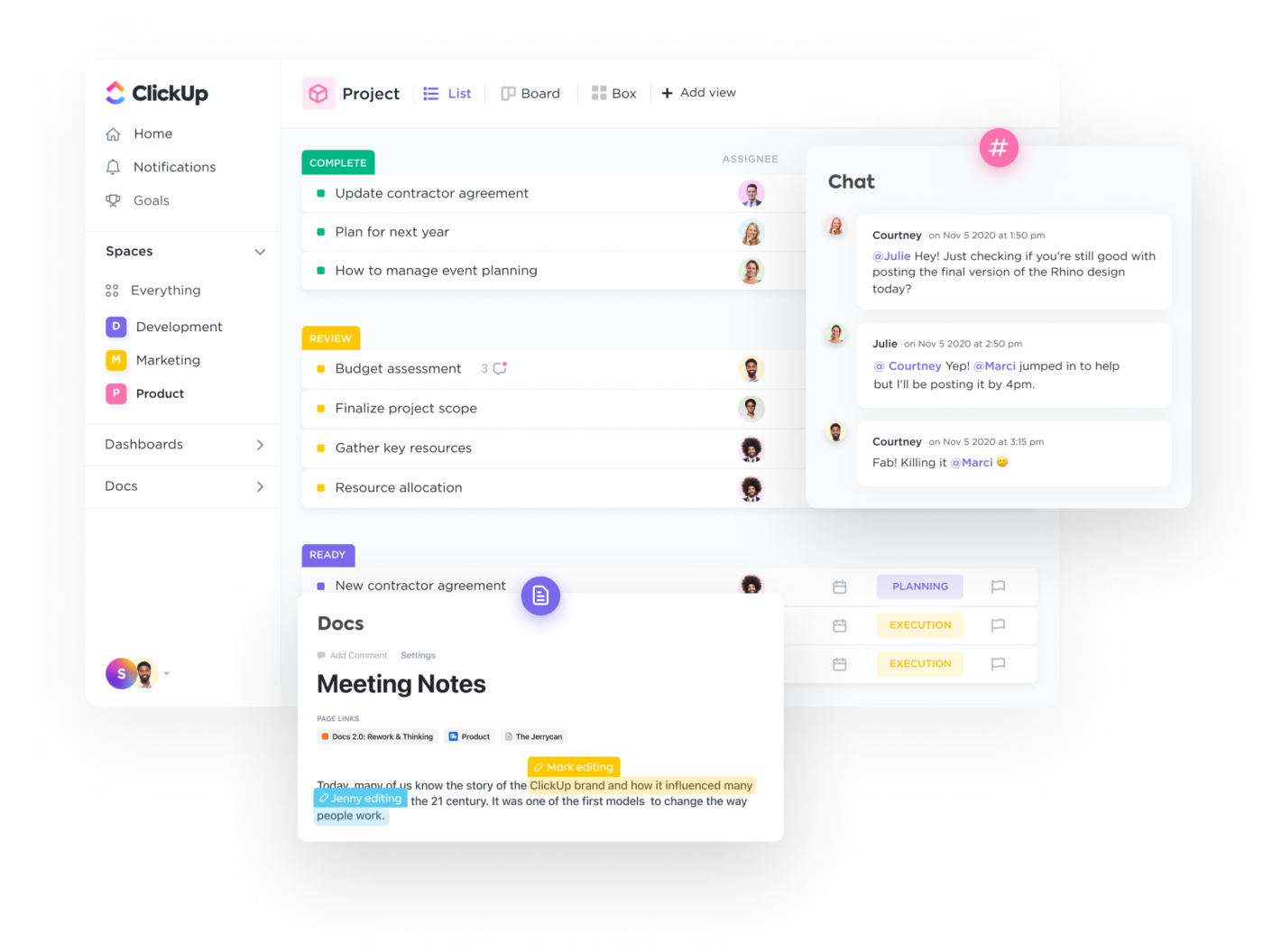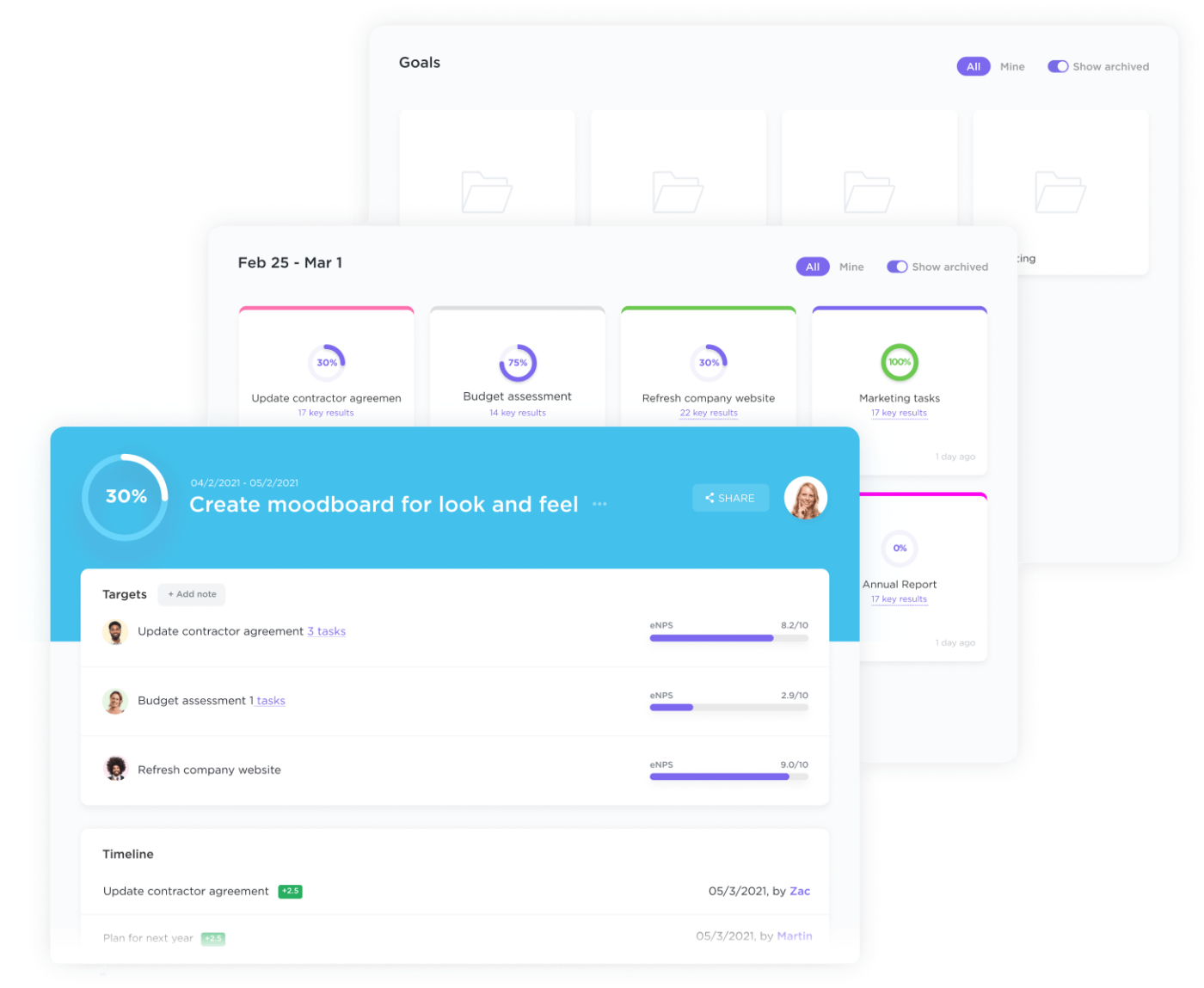

Leading a team?
Chances are you spend a lot of time thinking about how you communicate or if you’re even doing it well. No surprise there. Effective communication is the bedrock of a healthy team dynamic after all.
Studies have highlighted the importance of communicating too, including findings like:
- Well-connected teams experience a 20-25% productivity boost
- Unproductive meetings as a result of poor communication cost big US businesses upward of $100 million each year
- A whopping 97% of employees believe how they communicate impacts how efficient they are in the workplace
To create an effective communication strategy for the workplace, leaders need to understand and consider the types of communication skills that best the given situation. While some modes of communicating may seem obvious, the devil’s in the details with how you apply each approach and start learning body language hints.
To help you fine-tune how your team communicates, consider 12 communication strategies that come with plenty of upsides no matter the size of your team. 🚀

- Why are Communication Strategies Important?
- 12 Communication Strategies
- 1. Use multiple types of communication
- 2. Set communication ground rules
- 3. Eliminate communication silos
- 4. Have a designated facilitator
- 5. Use real-time collaboration tools
- 6. Set clear team goals
- 7. Encourage two-way communication
- 8. Use screen-sharing apps
- 9. Break down complex topics
- 10. Centralize your communication efforts
- 11. Hold regular team meetings
- 12. Prioritize 1-on-1 communication
- Types of Communication Strategies
Why are Communication Strategies Important?
While it doesn’t take a rocket scientist to figure out why communication strategies for the workplace are so important, the benefits are worth highlighting.
- Distribute must-have knowledge better: Creating open channels for effective communication in the workplace, such as regularly scheduled meetings, company newsletters, and performance reviews will arm employees with the knowledge necessary to understand their roles and how to manage their responsibilities. An open communication strategy gives teams better opportunities to hit their KPIs. 📈
- Encourage collaborative problem-solving: Fostering an environment of team collaboration and problem-solving in the workplace by encouraging employees to brainstorm and find solutions together. 🧠
- Hold only effective and necessary meetings: One of the more common forms of team communication is through a meeting. But unnecessary and unproductive meetings are detrimental to effective communication. That’s why you must only focus on the critical talking points, which you need to outline before the call or gathering. ⏰
- Encourage alignment: A major issue for remote teams is misalignment because of the various time zones. Your project communication plan must consider ways to strengthen team relationships—whether they’re remote team members or not—by regularly aligning everyone. 👯
- Build trust and maintain transparency: Transparency is key to any communication strategy when managing a team. Establish an environment of active listening so you build trust. 🤝
12 Communication Strategies
Without clear team communication, projects don’t cross the finish line, and growth stalls. That’s why knowing and implementing the communication strategies that work best for your team is critical to its success.
Let’s dive into our top 12 communication strategies you can start using for your team right away:
1. Use multiple types of communication
Your team should have multiple ways to communicate, including in-person conversations, email, phone calls, video calls, and chat tools. Using a variety of methods makes it so that everyone on the team is on the same page and has access to the information they need.

For example, if you use team communication solutions like ClickUp with the ability to tag and mention your team members within tasks, docs, and more, you enable your team to communicate as they work. This lessens context switching, which smooths out the process of getting work done.
2. Set communication ground rules
Set guidelines for how and when team members should communicate. This could include expected response times, how to use different communication platforms, and who should be CC’d on certain emails. 📝
This also extends to meetings too, arguably one of the workplace tasks that take up a big part of your team’s resources. Consider setting ground rules for verbal communication and how members should communicate within meetings (i.e. detail any expectations for prep work ahead of time).
3. Eliminate communication silos
Making sure everyone on the team is included in the communication loop is hard when you don’t have the digital tools that make that easy. This is especially true if you’re working with hybrid teams—meaning some team members work remotely and in the office.

No one should be left out of the conversation, which is why good communication eliminates silos. Your communication strategy should involve a small selection of workplace communication tools so you don’t spread yourself thin with too many business tools.
4. Have a designated facilitator
Designating one person to facilitate the communication process and ensure everyone gets their point across in a timely manner. Always aim to keep meetings productive and on task.
But if you want to take it a step further, assign responsibility to someone on the team to keep communication in check beyond meetings. A designated facilitator helps with task ownership and fill in the gaps.
5. Use real-time collaboration tools

Communicate easily with Whiteboard’s many built-in project tools perfect for brainstorming and exchanging ideas.
Real-time collaboration tools, such as ClickUp Mind Maps, Whiteboards , and Docs, offer a great way for teams to communicate with each other and work on projects simultaneously.
Think of Whiteboards as a sandbox where teams use visual and written communication types to share and refine ideas. The best part is that Whiteboard’s tools are easy to use and customizable enough for teams to reference and edit as they go.
6. Set clear team goals
Having clear and measurable goals is essential for teams to stay on track and ensure that everyone is working towards the same goals. ClickUp’s Goals features make it easy to set, track, and achieve team goals with plenty of visibility.

Create trackable goals connected to your work tasks so you can measure targets and visualize timelines. In terms of communication styles, it uses both written and visual communication to keep your team connected on goals.
7. Encourage two-way communication
For effective communication, it has to be a two-way street. When they say, “It takes two to tango” that goes for communicating in the workplace too. 💃
Encourage team members to ask questions and share their ideas openly. This helps build a more unified team that works from the same ideas and feedback.
8. Use screen-sharing apps

Screen-sharing apps like ClickUp’s Clip tool are extremely useful for remote teams. They allow team members to share their work in real time while ensuring everyone is aligned and can collaborate.
Of course, there are also tools like Zoom that enable teams to share their screen in real-time too. 💻
It’s a matter of finding what mix of tools smooths out any hiccups in a team’s workflow. This way the information handoff becomes a breeze and change management happens effectively.
9. Break down complex topics
Break complex topics down into smaller chunks to make them easier to understand. This includes dissecting issues into smaller, more manageable tasks so you can focus on one aspect at a time.

Presentations, docs, templates, matrices, and tools like Whiteboards are all helpful in breaking down complex tasks and project timelines so nothing falls through the cracks.
An upside of using these tools is that they all make your breakdown efforts referenceable, so teams stay up to speed at all times.
10. Centralize your communication efforts
Centralize, centralize, centralize. Often, team communication efforts are squandered because of a few errors in team management. This can happen from a variety of things like:
- A disjointed tech stack
- No referenceable framework for how projects should be approached
- Disconnected documents living on too many separate platforms
When communication is centralized, teams keep better track of their conversations, tasks, and projects in one space. This cuts down on task and context switching and helps keep your team focused on what matters.
It’s important to keep in mind that communication strategies—when used well—help teams make progress on the work itself rather than getting lost in managerial tasks. A big step in that direction starts with centralizing how you communicate and share information.
11. Hold regular team meetings
Holding regular team meetings is a great way to ensure that everyone is up to date on their tasks and in sync with each other. Team meetings also provide a great opportunity for open discussion and collaboration.
Anything that isn’t obvious is clarified and teams are allowed to bring up any and all potential issues. Regular team meetings are mostly verbal, but you shouldn’t forget to add visual and written communication to get your points across.
12. Prioritize 1-on-1 communication
Team leads shouldn’t forget to prioritize one-on-one communication. To reap the benefits of these meetings, you need strong communication skills in your workplace.
Start by scheduling regular meetings with team members to discuss specific topics. Use this time to give regular positive feedback so team members feel safe and appreciated. Here, you’ll begin to learn body language cues and other non-verbal communication.
One-on-one meetings give team members a chance to ask questions, share ideas, and get on caught up on any issues. Regularly hold these meetings and be sure to set clear communication ground rules.

If you need help getting a one-on-one meeting cadence off the ground, you can use a ClickUp template to get you started faster! Easily set up and track your 1-on-1 meetings with the ClickUp 1-on-1 template!
Types of Communication Strategies
Generally, there are four core communication strategies to consider when working with your team. Let’s detail each communication strategy so you know what would work best for your situation or role:
Verbal communication
When employees use verbal language to exchange information they’re using verbal communication. Whether it’s a face-to-face conversation, presentation, or Zoom meeting, your goal is to communicate effectively through verbal interactions.

For the best one-to-one communication, you have to consider your verbal skills like effectively explaining ideas, getting to the point, and keeping listeners engaged.
Nonverbal communication
Nonverbal communication is when employees convey messages without the use of words. This includes body language, facial expressions, gestures, or even eye contact. Out of all the communication strategies, this is often the most crucial to understand.
Nonverbal communication provides context to the verbal message. And it ultimately helps you pick up on nonverbal cues from employees. Not everyone will want to communicate directly through a conversation.
With the rise of virtual communication, it can be a lot more challenging to pick up on body language, tone of voice, and other non-verbal cues that are easier to see in person.
It’s why cameras are encouraged to be on when you’re on a team Zoom call. Understanding non-verbal communication is important to communicating remotely because it helps provide context and minimizes the risks of misunderstandings.
Written communication
Emails, memos, newsletters, notes, and even symbols are all perfect examples of written communication. A lot goes into effective communication strategies simply through writing—everything from the words you choose, your sentence structure, and how your writing is organized counts when communicating this way.

In the workplace, employees exchange information through written documents that take many forms. This type of communication is beneficial because it allows for a permanent record of the conversation so everyone can easily reference and review it.
Having a single knowledge base system to work from makes it easier to share with multiple colleagues and eliminates the potential for misinterpretations. This communication strategy is also an excellent way for managers to delegate tasks and responsibilities.
Bonus: Internal communication software!
Visual communication
Visuals such as diagrams, charts, videos, photographs, and more are used to convey messages through visual communication. Of the most effective communication strategies, this one is beneficial because it helps break down complex concepts and make them easier to understand.

Visuals—like ClickUp Whiteboards—help add context to the message, making it easier to comprehend. It’s why picture books exist. Plus, this type of communication strategy lets you explain complex concepts, make faster decisions, increase engagement in meetings, and is easily referenceable.
Use Communication Strategies with Your Team in ClickUp
Using the right tools, strategies, and communication methods will help improve team communication and collaboration. The goal is to ensure everyone is working toward the same objectives and that’s best done through a solid communication strategy.
Better yet, using real-time collaboration tools to centralize team communication will ensure everyone has access to the information they need. ClickUp offers a wide range of features to do just that!
Use ClickUp’s real-time collaboration tools, goal-tracking feature, screen-recording extension, and meeting templates to help teams stay aligned and remain productive.
Hone in on your communication strategy with ClickUp! Get started for free today!



